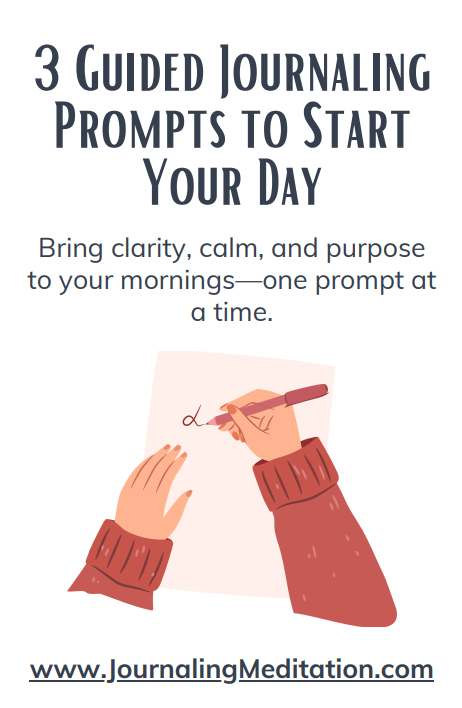Ever feel like the world’s spinning faster than a DJ on a Saturday night? You’re not alone. In our always-on-the-go lives, finding a moment of peace can seem impossible. That’s where 5 minute mindfulness exercises come into play. These quick practices can be your secret weapon to calming stress, improving focus, and embracing the present moment—no incense required.

(This post contains affiliate links. If you make a purchase through these links, I may earn a commission at no extra cost to you.)
Understanding Mindfulness
What is Mindfulness, Anyway?
At its heart, mindfulness is about being fully present and engaged in the moment, without passing judgment. Think of it as being the CEO of your attention; you decide where to direct it.
Why Science Loves Mindfulness
Research shows mindfulness can reduce stress and enhance focus, but there’s more! It can even help improve relationships. Yes, becoming a more mindful you could mean fewer arguments about whose turn it is to take out the trash.
Busting Mindfulness Myths
Mindfulness isn’t about turning off your thoughts or feelings. It’s about noticing them without letting them hijack your mental peace. It’s the power of letting them just be.
Preparing for Mindfulness Exercises
Before we jump in, let’s set the stage for success:
- Find a Quiet Spot: Even if it’s just a corner of your bedroom or office.
- Set an Intention: What do you hope to achieve? A moment of peace? A clearer mind?
- Breath is Your BFF: It’ll be your anchor through these exercises.
5 Minute Mindfulness Exercises
Breathing Exercise
Take a slow, deep breath in through the nose. Focus on the sensation, feeling and even temperature of the air filling your lungs, then slowly exhale through the mouth. Counting breaths can be a fantastic addition to help anchor your focus as well.
Mindful Observation
Grab something nearby—a plant, a cup of coffee, anything. Spend a few minutes just observing it. Notice the colors, the weight, the texture. It’s not about thinking, just observing.
Body Scan
Starting at your toes, work your way up your body, paying attention to each part. Notice any sensations, tension, or warmth. It’s like giving your body a good morning stretch, but for your mind.
Listening Mindfully
Close your eyes and listen to the sounds around you. Maybe it’s the hum of your computer, birds chirping, or the distant sound of traffic. Listen without labeling or judging the sounds.
Mindful Eating
Take a small piece of food (a raisin, a piece of chocolate) and eat it slowly. Notice the textures, the flavors, the sensations. Eating can be a form of meditation too—who knew?
Mindful Walking
Take a short walk outside and observe everything around you. Feel the air on your face, listen to the sounds around you and just notice things as you pass by without judgement. A bonus for mindful walking: it improves your mood!
Mindful Communication
Listen actively, be present in conversations, and notice how it changes the dynamics. Now try not to judge what the other says. Good luck!
Tips for Consistent Practice
- Make it a Routine: Like brushing your teeth, make mindfulness a non-negotiable part of your day.
- Use Apps or Journals: There are fantastic apps and journals designed to guide you through mindfulness exercises and track your progress. Apps can help by reminding you while journals are a great way to track your progress.
Overcoming Common Challenges
Distractions are part of the process. They’re actually how you build resilience. It’s no different than working a muscle. When you notice your mind wandering (and it will), gently bring your focus back to your breathe or anchoring thought. Remember, mindfulness is a skill that gets better with practice.
Resources for Further Learning
For those looking to dive deeper, I highly recommend checking out Mindful.org, a treasure trove of resources on mindfulness practices, including 5 minute mindfulness exercises.
Thanks For Reading!
There you have it—simple, effective 5 minute mindfulness exercises that can make a significant difference in your daily life. Remember, the key to mindfulness is consistency, not perfection. So, why not give it a try? What do you have to lose, except maybe a little stress?
I’d love to hear about your experiences or any mindfulness tips you’ve discovered. Drop a comment below, and let’s keep the conversation going. Here’s to a more mindful you!
FAQ: Dive Deeper into 5 Minute Mindfulness
As we explore the simplicity and depth of 5 minute mindfulness exercises, questions naturally come up. Whether you’re a seasoned meditator or just dipping your toes into mindfulness waters, these questions can provide further clarity and enhance your practice.
What can 5 minutes of mindfulness do?
Five minutes of mindfulness can do wonders! It’s like a mini-vacation for your brain. This brief pause can reduce stress, increase focus, and improve your mood. Think of it as pressing the reset button on your day. In just five minutes, you can step away from the chaos of daily life, tune into your body and breath, and return feeling more grounded and centered.
How can I reset my mind in 5 minutes?
Resetting your mind in 5 minutes is all about breaking the cycle of constant thought and giving yourself a moment of peace. Here’s a quick way to do it:
- Find a quiet space.
- Sit or stand comfortably.
- Take deep, slow breaths, focusing solely on the sensation of air entering and leaving your body.
- If your mind wanders (and it will), gently bring your attention back to your breath.
- Close the session with a moment of gratitude—for your breath, your body, or simply the opportunity to take this time for yourself.
What are 5 ways I can practice mindfulness?
- Focused Breathing: Concentrate on your breath, observing each inhale and exhale.
- Mindful Observation: Select an object and notice every detail about it.
- Body Scan: Mentally scan your body from head to toe, observing any sensations.
- Listening Mindfully: Listen to the sounds around you without judgment.
- Mindful Eating: Eat slowly, savoring each bite, paying attention to the taste, texture, and sensations.
What are the 4 Ts of mindfulness?
The 4 Ts of mindfulness can be summarized as:
- Time: Setting aside time each day for mindfulness practice.
- Trigger: Establishing a trigger to remind you to be mindful (e.g., every time you open a door).
- Task: Choosing a task during which you will practice mindfulness (e.g., mindful walking).
- Take in: Taking in the experience fully, with all your senses, allowing it to enrich your moment-to-moment experience.
Mindfulness doesn’t have to be complicated or time-consuming. As these FAQs reveal, even just five minutes can significantly impact your well-being and mental clarity.
We’d love to hear your thoughts or any additional questions you might have. Have you tried any of these 5-minute mindfulness exercises? Did you notice a difference in how you felt afterward? Share your experiences in the comments below and let’s continue this fascinating journey of mindfulness together.






